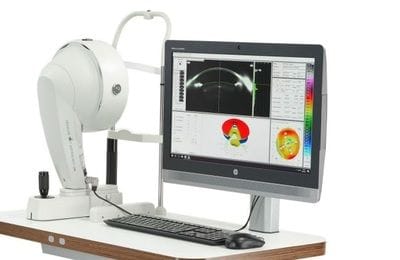Keratoconus Specialists

About
Keratoconus is today a classic topic in ophthalmology. Its history is associated to a background of a corneal disease with a blinding potential and no hope for treatment. It is only since the late 1950s that contact lenses have become a partial solution for the visual loss for some cases of keratoconus while other approaches were Non existing.
Those patients diagnosed with keratoconus had the same category as any corneal dystrophy with no potential treatment and no therapeutic recommendations to perform. The patients had no hope for the future and could not do anything about preventing its progress or being informed about the potential long-term complications or any consistent and reliable therapeutic approach. Since those historical and recent "black days" until now there has been a tremendous evolution. At this present moment there is a completely different approach for the diagnosis and treatment of keratoconus.
The study and diagnosis of keratoconus has radically changed since the early seventeenth century when the Jesuit Priest Christoph Scheiner experienced and reported that glasses of different shapes reflect light in different ways, until nowadays, corneal diagnostic technology has taken a huge step forward. Scheiner used the optical phenomenon he described to assess the curvature of the human cornea. In doing it, he was able to compare the light reflections of different shapes and he even described some pathologies that were evident cases of keratoconus.
Since those early days and later when the sophistications for the measurement of corneal curvature were introduced in the late nineteenth century by Javal until recently with the development of modern corneal topographies, a new diagnostic universe has appeared. A universe of precise diagnosis, developing early indicators of the disease and indeed creating grading in categories of the disease according to severity.
Keratoconus or conical cornea is a degenerative disorder of the eye where the cornea becomes thin causing it to bulge outward into a conical shape. As a result vision becomes distorted. A normal cornea is nice and evenly round similar in curvature to a soccer ball, however in keratoconus the thinning bends the cornea to look like a cone or a witch's hat.
Keratoconus is a progressive eye disease, usually affecting both eyes. The degree of progression in each eye is often unequal and it isn't unusual for the condition to be significantly more advanced in one eye. Those who are more at risk at those that suffer with allergies, ocular sensitivities and people who consistently rub their eyes; rubbing of the eyes makes keratoconus worse.
Symptoms
Patients who suffer with Keratoconus often present with the following symptoms:
- Light and glare sensitivity.
- Wavy or double vision when looking.
- Distortion when looking at close range and or at objects further away;
- Haloes around lights;
- Difficulties in seeing their computer screen;
- Frequent changes to their spectacle prescription.
- If keratoconus is suspected, an instrument called an Oculus Pentacam will be performed to accurately map the corneal surface. This enables us to accurately re-create the shape of the cornea making not only diagnosis easier but more importantly helps us monitor changes over time.
Treatment
Most patients with keratoconus can lead normal lifestyles. Our resident optometrist, Dr. Allan Ared has completed a PhD in keratoconus, and he can be consulted about the various non-surgical solutions for keratoconus such as hard contact lenses or piggy-back contact lenses. Our resident ophthalmology specialist, Dr. Anthony Maloof is a world authority in corneal transplantation, performs surgical procedures for those who are unsuitable for conservative management.
Every keratoconus patient should also be worked up for allergy testing, as allergy avoidance in patients with this condition may help to reduce the progression of keratoconus.
Keratoconus usually progresses until a person is in their late twenties or early thirties. The younger the person, the more rapidly the condition will progress which is why early detection is paramount. Those with a suspected family history of keratoconus should be getting their eyes examined for this condition.
Clinical observations of morphological changes in keratoconus have been well documented since Nottingham first described keratoconus as a distinct condition amongst the corneal ectatic conditions in his treatise "Practical observations on conical cornea: and on the short sight, and other defects of vision connected with it"; however, since then significant advances have been made in the recognition of this condition.
Indeed, computerised corneal topographical assessment now facilitates the diagnosis of keratoconus, which prior to the development of this technology was extremely difficult due to the absence of clinical signs in the initial stages of the disease, the highly variable nature of the signs once apparent and the subsequent lack of alignment with disease progression.




